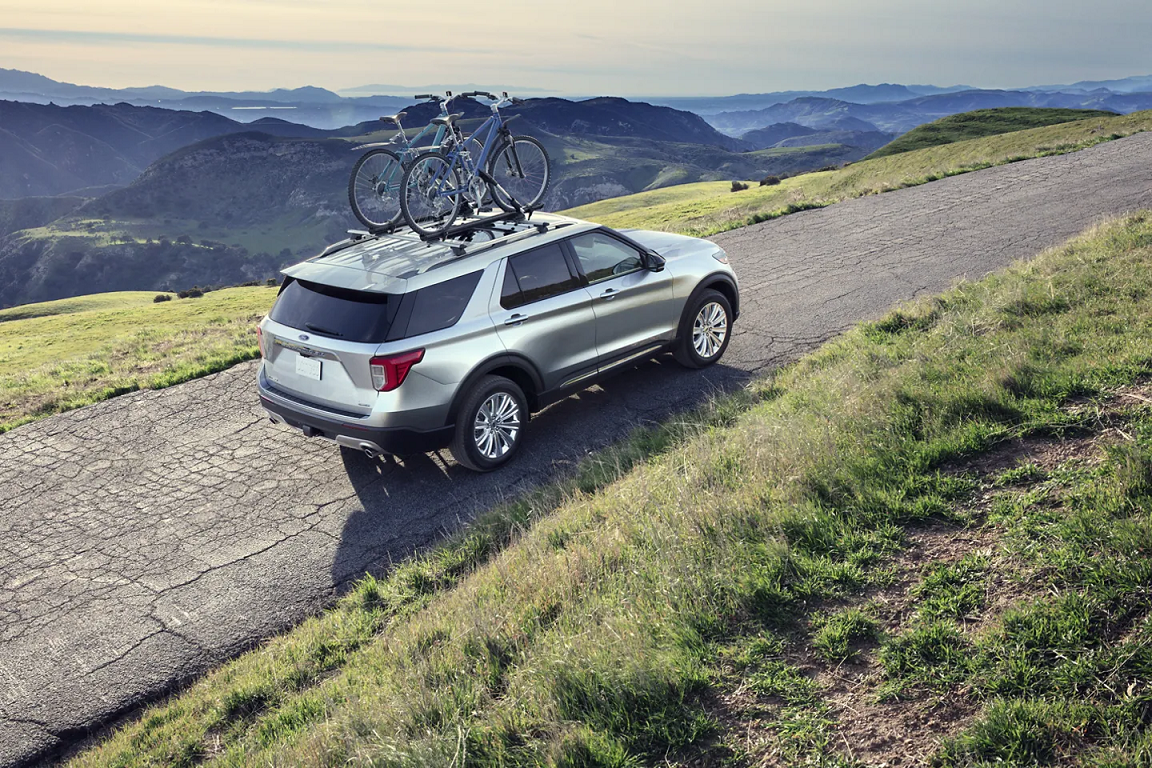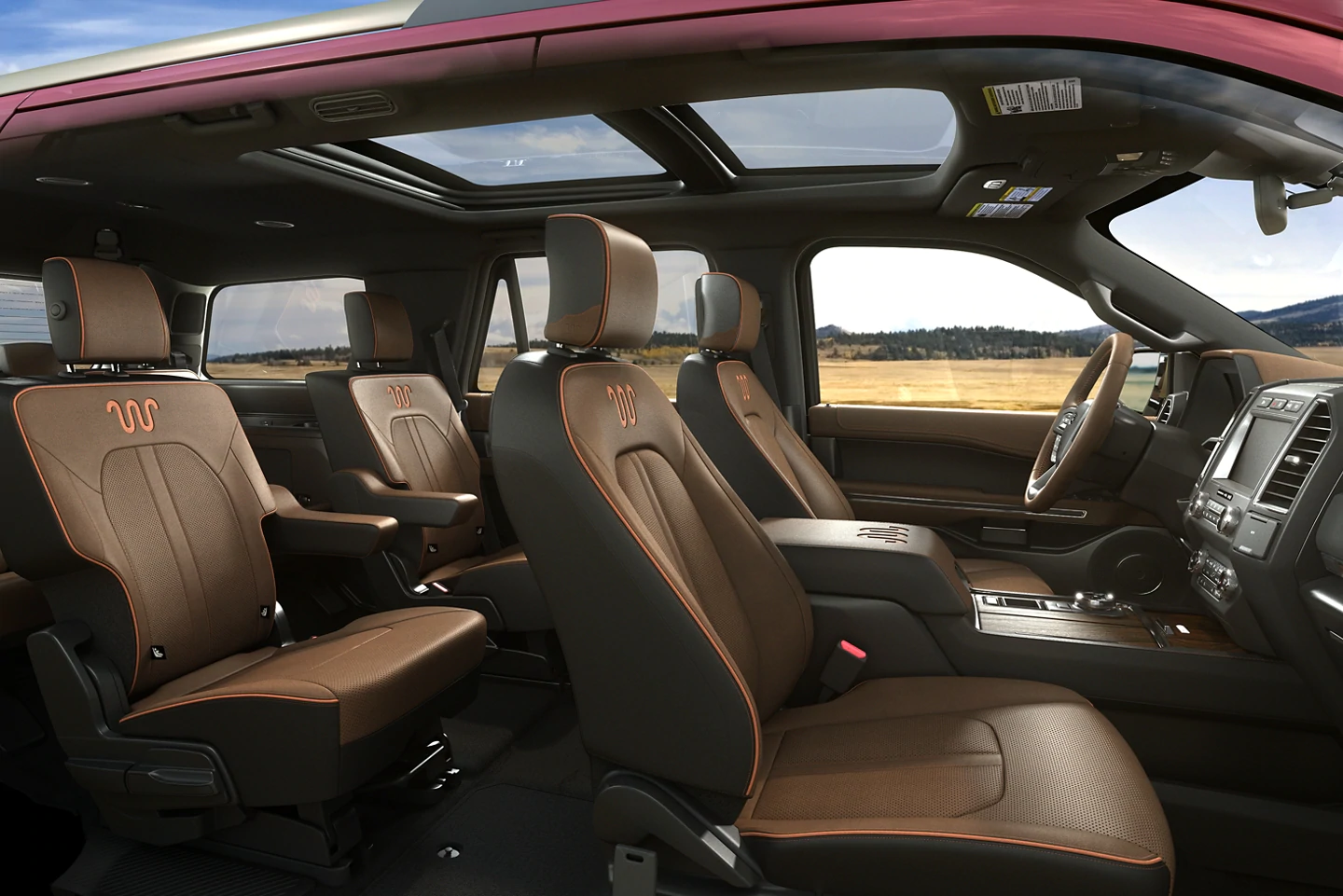2021 Ford SUV Shopping Guide near Dothan, AL

2021 Ford SUV Shopping Guide near Dothan, AL
Whether you’re interested in efficiency, power, safety, or capacity, there’s an SUV with your name on it here at Gilland Ford. To help you familiarize yourself with Ford’s lineup for 2021, we’re here to fill you in on what to expect from the EcoSport, Escape, Bronco, Bronco Sport, Mustang Mach-E, Edge, Explorer, and Expedition. That way, by the time you arrive to go for a spin, you’ll know which set of wheels is right for you.
2021 EcoSport and Escape
We’ll start on the smaller end of the spectrum with the 2021 EcoSport and Escape. If you opt for the former, you’ll enjoy a healthy 27/29 MPG city/hwy1 thanks to its efficient 1.0L EcoBoost® engine, as well as 123 horsepower and 125 lb.-ft. of torque. Its cabin is just as exceptional, providing either seating for five or up to 50.0 cubic ft. of maximum cargo space2 for all the essentials. The Escape, on the other hand, is powered by a standard 1.5L EcoBoost® system that generates 181 horsepower3 and 190 lb.-ft. of torque3 at 28/34 MPG city/hwy1. And with the rear seats stowed, you’ll have 65.4 cubic ft. of total storage2.
2021 Bronco and Bronco Sport
Next, we have two of the latest additions to the Ford SUV family—the 2021 Bronco and Bronco Sport. Though both offer outstanding off-road capabilities, the former is the more powerful of the two with its available 2.7L EcoBoost® 4-cylinder engine that provides 310 horsepower, 400 lb.-ft. of torque, and a 3,500-lb. maximum towing capacity4. That being said, the Bronco Sport offers plenty of appeal in its right, including an optional 2.0L EcoBoost® powertrain that cranks out 250 horsepower3 and 277 lb.-ft. of torque3, Advanced 4x4 with Twin-Clutch Rear Drive Unit, and a spacious 65.2 cubic ft. of overall cargo area2.
2021 Mustang Mach-E and Edge
If you have your heart set on a performance-oriented SUV, then you might want to check out the 2021 Ford Mustang Mach-E or the Ford Edge. The former is an electric model that delivers outstanding capabilities, including up to 305 miles of driving range5, 480 horsepower, and 634 lb.-ft. of torque. Plus, it certainly looks the part with its breathtaking design. Meanwhile, the 2021 Edge draws its muscle from an available 2.7L EcoBoost® V6 engine that pumps out 335 horsepower3 and 380 lb.-ft. of torque3 without breaking a sweat. As an added bonus, you’ll receive cabin amenities like a leather-wrapped steering wheel and heated front seats on select trims.
2021 Explorer and Expedition
Finally, it’s time to talk about Ford’s three-row SUVs. If you end up taking home the 2021 Explorer, you’ll be able to pack in a total of seven passengers or place large items in 87.8 cubic ft. of storage space2 with the second and third rows folded down. Under the hood, the standard 2.3L EcoBoost® 4-cylinder powertrain produces 300 horsepower3 and 311 lb.-ft. of torque3 for a 5,300-lb. towing capacity4, so you can transport a boat or camper with ease. That being said, the Ford Expedition manages to raise the bar with its 8-passenger capacity and 104.6 cubic ft. of cargo volume2. And with its 3.5L EcoBoost® V6 engine, you’ll receive 375 horsepower, 470 lb.-ft. of torque, and a 9,300-lb. maximum trailering rating3.
This 2021 Ford SUV shopping guide near Dothan, AL, is only the beginning, so contact Gilland Ford for additional details about these spectacular vehicles!

1. EPA-estimated city/hwy mpg for the model indicated. See fueleconomy.gov for fuel economy of other engine/transmission combinations. Actual mileage will vary. On plug-in hybrid models and electric models, fuel economy is stated in MPGe. MPGe is the EPA equivalent measure of gasoline fuel efficiency for electric mode operation.
2. Cargo and capacity limited by weight and distribution.
3. Horsepower and torque ratings based on premium fuel per SAE J1349 standard. Your results may vary.
4. When properly equipped. See dealer for details.
5. Based on full charge. Actual range varies with conditions such as external environment, vehicle use, driving behaviors, vehicle maintenance, lithium-ion battery age and state of health.

